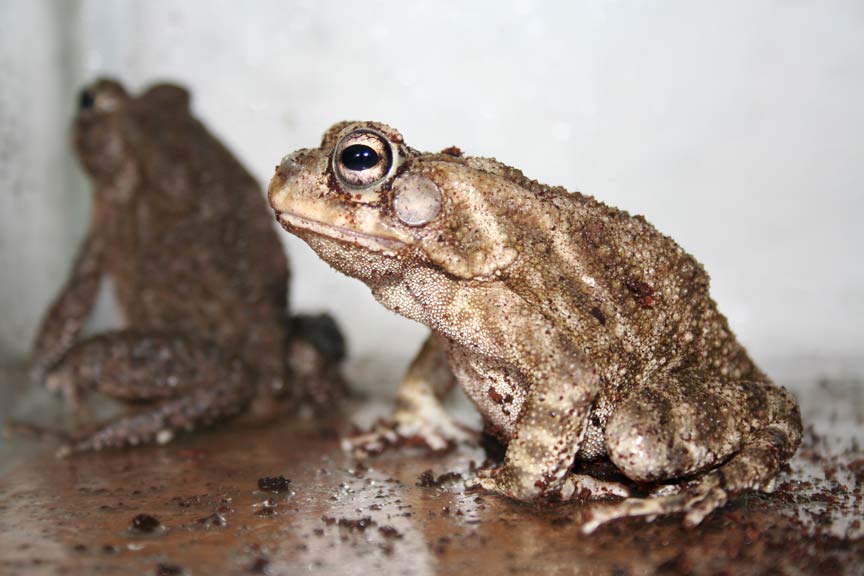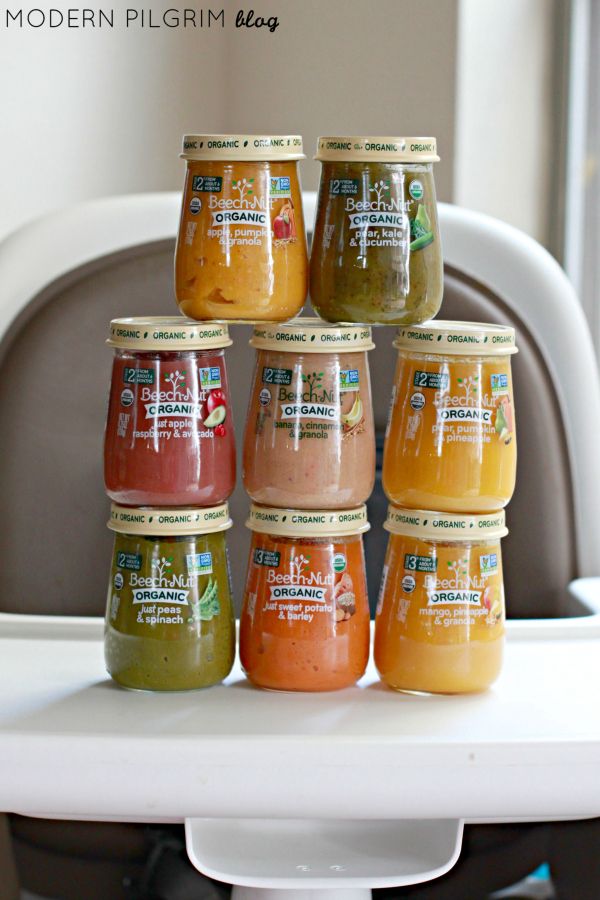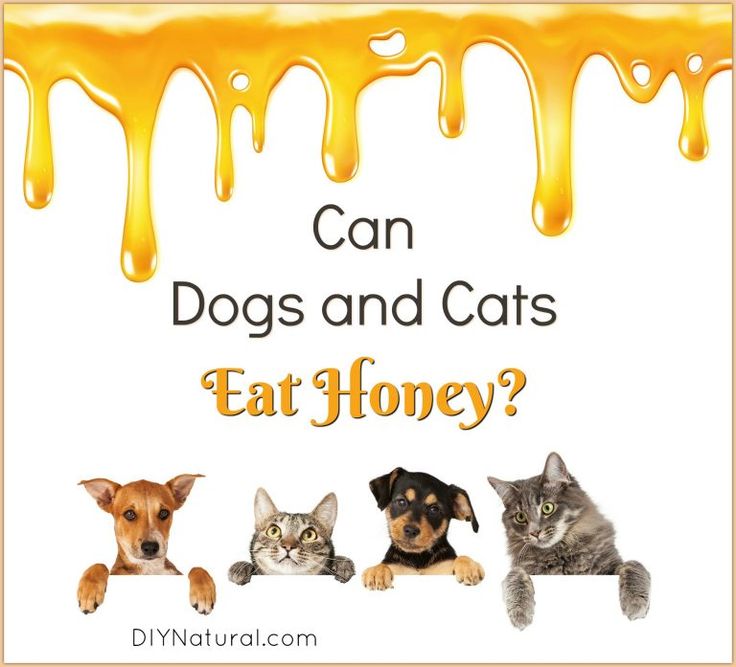What to feed baby horned toads
What Do Baby Horned Toads Eat?
As an Amazon Associate I earn from qualifying purchases.
A horned toad, also known as a horny toad or a horned lizard, is a type of lizard that comes from the North American continent. These creatures, which are reptiles, are commonly referred to as Phrynosoma because their physical appearance resembles that of a toad. Texas horned lizards, often known as Phrynosoma cornutum, are the most frequent species of horned lizards.
The horned lizard is distinguished by a spiky nose, tiny and flattened round bodies, and camouflage abilities. The American Southwest is home to a variety of lizards, including the Texas horned lizard. The desert-dwelling Texas horned lizard may also be found in Kansas, Colorado, and Arizona.
Texas horned lizards are sometimes mistaken for Texas spiny lizards. Since they don’t thrive in captivity, Texas horned lizards have been declining in number lately as pets. In Oklahoma, Texas horned lizards are protected, and the toad is considered to be most active between April and September.
The most noticeable feature about horned lizards is their body form, which differs from that of other lizards in a number of ways. They don’t have the sleek tubular body form of most lizards. Instead, they have a wide flattened form that is well suited to concealment and their subterranean lifestyle. The spiny scales of the horned lizard are obvious, with a crown of horns on the back of their heads and various spines all over.
What Do Baby Horned Toads Eat?The diet of the horned toad is comparable to that of other lizards, including tiny invertebrates. The diets of Phrynosoma species, on the other hand, are often quite specialized, with ants, in particular, playing a significant role. Live crickets are not the right food for your species. A diet consisting entirely of live crickets may be inexpensive, but it is not suitable. Make certain you have all of your requirements met and that you can provide a sufficient supply of the appropriate nutrients by researching them thoroughly.
The horned lizards prefer ants to other insects, although they will also consume a variety of invertebrates such as grasshoppers, beetles, and spiders to complement their diet. They usually hunt in open areas at a low speed, silently searching or sitting in wait for an oblivious ant or another meal item to appear. The lizard snaps up a passing prey animal with a flick of its tongue and devours it whole.
Beetles Are Also On The Menu of Baby Horned ToadsWhat Does A Baby Horned Toad Look Like? A Horned ToadThe regal-horned toad is distinguished by its horns, parallel fringe-like scales on the side, anal scales (applies to male lizards), and swollen tails. Regal-horned lizards eat only harvester ants, however not dead ones. The horned lizard’s sticky tongue, not its jaws, is used to capture ants because it has little teeth. The venom of harvester ants has little impact on the insides of a horned lizard, despite the fact that they are poisonous. A horned lizard’s territory is harmed by a swarm of ants, yet they flee in the presence of one. A swarm of ants that attacks simultaneously may kill an adult horned lizard.
A horned lizard’s territory is harmed by a swarm of ants, yet they flee in the presence of one. A swarm of ants that attacks simultaneously may kill an adult horned lizard.
Predatory snakes face significant difficulties in attacking horned lizard bodies, which are made of a hard exterior. Horned lizards’ camouflage is that superb that they’re sometimes mistaken for rocks. The robust body, on the other hand, may occasionally limit mobility. A horned lizard might also feign death or present its thorny big portion to a predator like a snake by playing dead or presenting the tough body.
Another alternative is to flee, suddenly halt, and hiss at their attackers. They squirt blood out of their eyes and wag their tails violently as they run away. Another advantage of their bodies is that they allow them to readily absorb heat from the sun, especially in lower-temperature regions.
The horned lizard can adjust its position and move its body to get the most light. Digging into the dirt is simple for horned lizards who reside in a dry environment. The lizard uses the scales on its lower jaw to scratch and cut the dirt or earth, then shakes its body and nearly all of it above ground level with a simple buzz of its jaw.
The lizard uses the scales on its lower jaw to scratch and cut the dirt or earth, then shakes its body and nearly all of it above ground level with a simple buzz of its jaw.
Because of their voracious appetites, horned lizards are vulnerable to predators. Hawks, snakes, roadrunners, lizards, ground squirrels, coyotes, mice, dogs, and cats are all predators of horned lizards.
Horned lizards employ a variety of methods to avoid predators, some of which are quite creative. The ability to squirt a stream of blood from the corner of their eyes is the lizard’s most unusual strategy. This spray may be directed with moderate accuracy at the predator’s eyes and mouth, and it is perhaps the last resort.
How To Protect Baby Horned Toads Protect From Predators? A Horned Toad Camouflaging The WildCamouflageThe horned frog is a tan, sandy color that closely resembles the soil and dirt where he dwells, which are hot, dry, and sandy areas of North and Central America.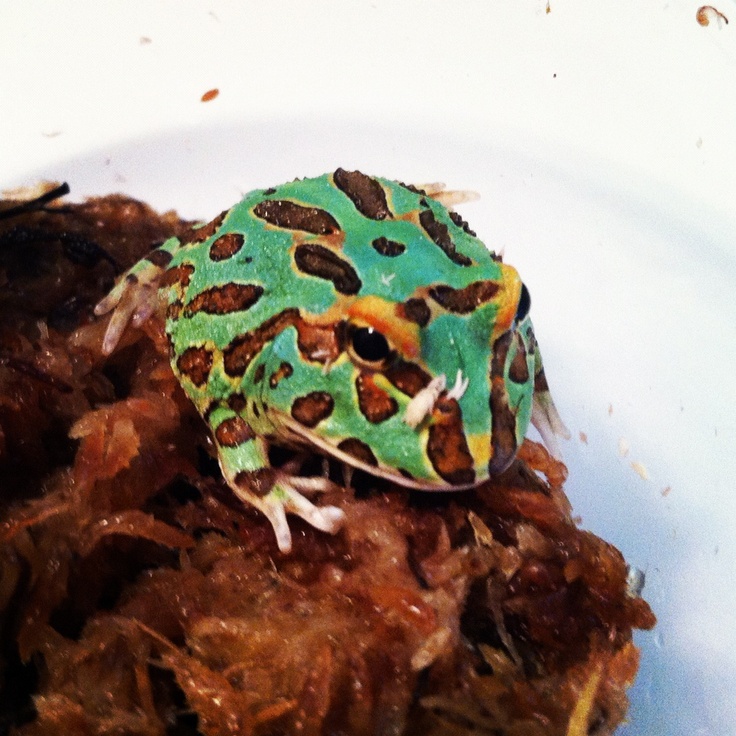 The horned frog is more difficult for predators to spot as a result of superb camouflage. Its back and head are typically sandy brown, while body markings are various hues of yellow, tan, brown, or red. A horned frog can quickly alter its color from light to dark or vice versa, allowing him to blend in further with the surrounding environment.
The horned frog is more difficult for predators to spot as a result of superb camouflage. Its back and head are typically sandy brown, while body markings are various hues of yellow, tan, brown, or red. A horned frog can quickly alter its color from light to dark or vice versa, allowing him to blend in further with the surrounding environment.
The horned frog’s first response to danger is to freeze in his tracks and stay motionless. If the attacker approaches and he has to move, the horned frog will rapidly run a short distance, stop, then flee before stopping again, which confuses the predator’s eyesight. The hissing and tossing of the head toward the predator is yet another anti-predator defense mechanism intended to terrify and frighten. If the show of bravery fails, the horned frog has the ability to flatten his body against the ground and hide from view by eliminating his shadow.
Body DefenseIf a predator attempts to seize the horned frog with his mouth, the horned frog will push that side of his body into the ground, preventing the frustrated predator from moving his lower jaw underneath and lifting or biting him.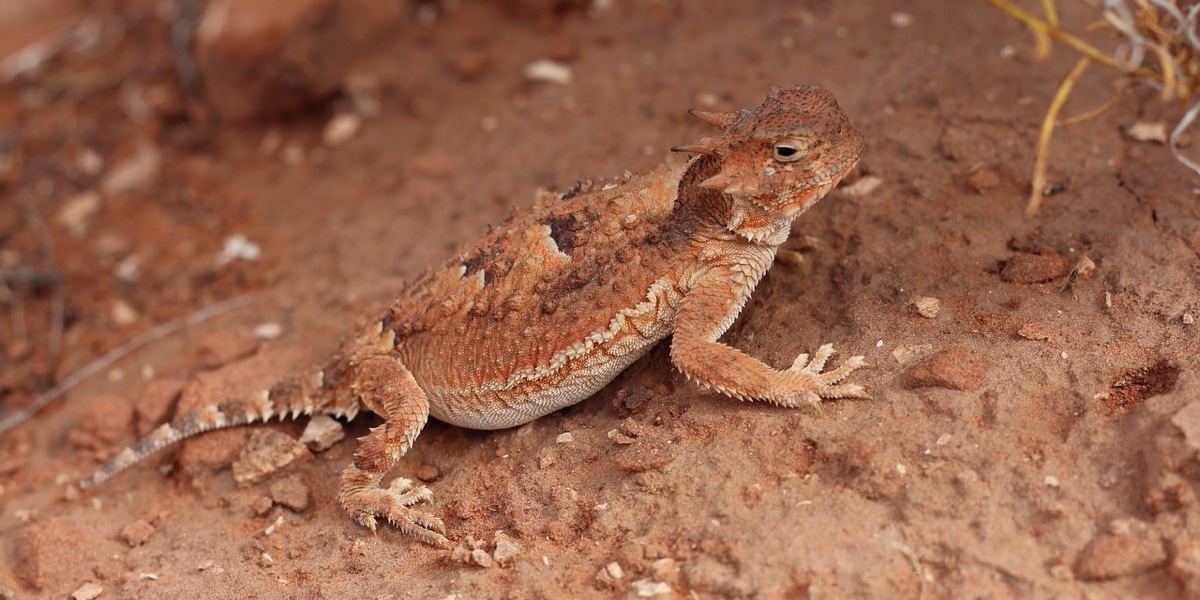
The horned frog can be recognized by its large, protruding eyes, which are set wide apart on the head. To avoid being grabbed by the head or neck, he may stick his horns upright in a menacing posture or poke the predator until it leaves. To appear less appealing to a hungry predator, he fills his lungs with air and puffs up his spiky body into a towering balloon that is too big for many predators to consume.
Shooting BloodThe horned frog’s most unusual defensive mechanism is his ability to squirt blood from his eyes straight at predators. The blood comes out of tiny ducts in the corners of his eyes and may shoot up to three feet.
The horned frog’s strategy is to block the blood flow from leaving its head, which raises blood pressure and causes the sinus walls to shatter, allowing blood to discharge. The poisonous substance in the shooting blood attracts and confuses predators, while the bleeding itself is toxic to dogs, coyotes, and wolves. The meat of this particular species is poisonous to dogs, making them sick.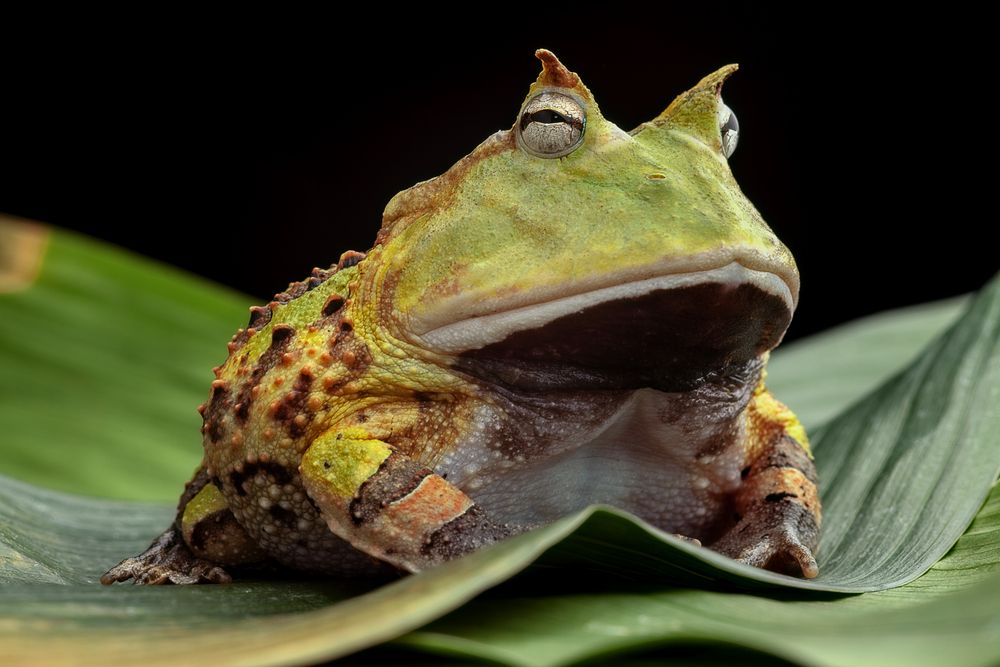 Dogs are sensitive to the blood’s foul taste and become nauseated after eating it. The lizard can continue to fire blood at the predator until he is scared away.
Dogs are sensitive to the blood’s foul taste and become nauseated after eating it. The lizard can continue to fire blood at the predator until he is scared away.
The Horny Toad has been designated as a vulnerable species due to its decreasing number in the wild. As a result, they are no longer permitted as pets, but they can still be exhibited in zoos for study purposes. Apart from that, there are no other methods for you to acquire them.
Humans are largely responsible for the Horny Toad’s downward trend. The Fire Ant was introduced as an invasive species to the Texas deserts, and they have driven away from the native ant species, which may be their only source of food. Because Fire Ants are a nuisance to humans, they have been poisoned with pesticides in an attempt to wipe out ant colonies, regardless of the species of ants that may be present. Because of this, the Horned Lizard’s major food source has decreased, which is why these lizards’ wild population has fallen.
Since the fast decline of wild Horny Toads in their natural habitat, zoos have been attempting to boost these lizards’ populations by rearing them in captivity and then releasing them in the wild.
Another disadvantage of Horny Toads is that they are not good pets. They do not flourish in domestic settings, and no species of Horned Lizards have been domesticated. These reptiles are uncomfortable being handled and have poor relationships with people.
The greatest factor for their dislike of being pets is that they need a highly specialized diet. The majority of the Horny Toad’s nutrition comes from ants. These reptiles will not eat other types of insects, however, they may be supplemented with them to improve their ant-based food. However, other insect species are only used as supplements since they can not survive on them alone. They acquire the bulk of their calories from ants and need to be fed with ants in order to thrive in captivity.
The difficulty is that it’s nearly impossible to find ants as pet lizard food. As a result, former owners of Horny Toads go above and beyond to obtain ants for their lizards. Others choose insects such as crickets because they are more common. While they enjoyed studying about the animals, they soon learned that Horned Lizards are nearly impossible to keep. It’s either too difficult to obtain live ants or the reptile just refuses to eat anything other than crickets or other similar feeder insects when you offer them. It will become apparent to you that it is starving to death even though you do your best to deceive it into consuming feeder insects.
As a result, former owners of Horny Toads go above and beyond to obtain ants for their lizards. Others choose insects such as crickets because they are more common. While they enjoyed studying about the animals, they soon learned that Horned Lizards are nearly impossible to keep. It’s either too difficult to obtain live ants or the reptile just refuses to eat anything other than crickets or other similar feeder insects when you offer them. It will become apparent to you that it is starving to death even though you do your best to deceive it into consuming feeder insects.
Amazon and the Amazon logo are trademarks of Amazon.com, Inc, or its affiliates.
HORNY TOAD LIZARD Caresheet | Reptile Rapture
Reptile Rapture,
6308 Monona dr, Monona WI 53516
608-221-0094 www.reptilerapture.net
Common Name: Horny toad lizard, Texas horny toad
Scientific Name: Phrynosoma cornutum
Origin: South Western USA & Northern Mexico
Size: 5"- 8"
Lifespan: 5 years, max unknown
You will find many ways on the internet, on "how to" take care of this animal.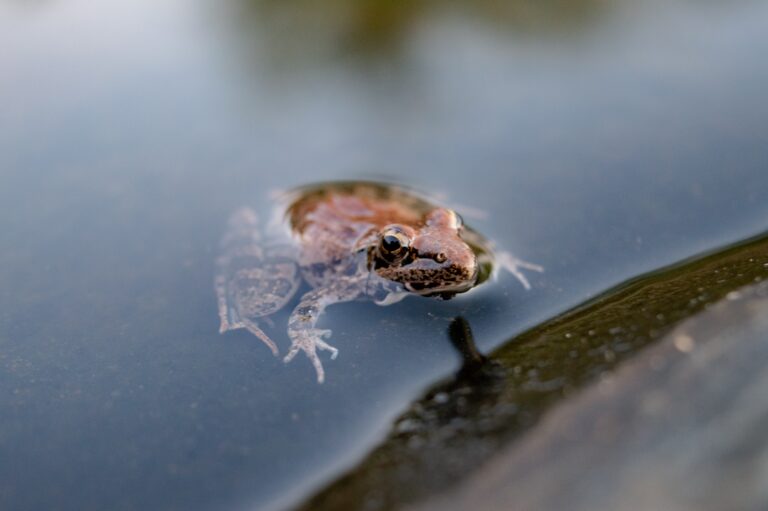 This care sheet is showing the way we found works best for us from our years of experience of caring for this species.
This care sheet is showing the way we found works best for us from our years of experience of caring for this species.
HOUSING
Horny Toad lizards are from the hot dry southwest. They have perfect camouflage for rocky places. They are not huge climbers but will climb low lying branches and decor. Floor space is more important than height in your lizards enclosure. We recommend at least 30" x 12" tank or a 18" x 18". Exo Terra's Small or Zilla's 20 long critter cage. These lizards are communal and seem to do fine in each others company. We would not suggest mixing them with other species of lizard. They are not aggressive enough feeders and the other lizards would eat all the food.
Horny toad lizards like to dig and do fine in natural sand, e.g., play sand or Exo Terra sand. Just don't make it too deep or you will never see them. Do not use calcium sand as this can clump in your lizards gut and cause impaction. We suggest approximately one inch depth. Also be sure to give your lizard a couple different places to hide.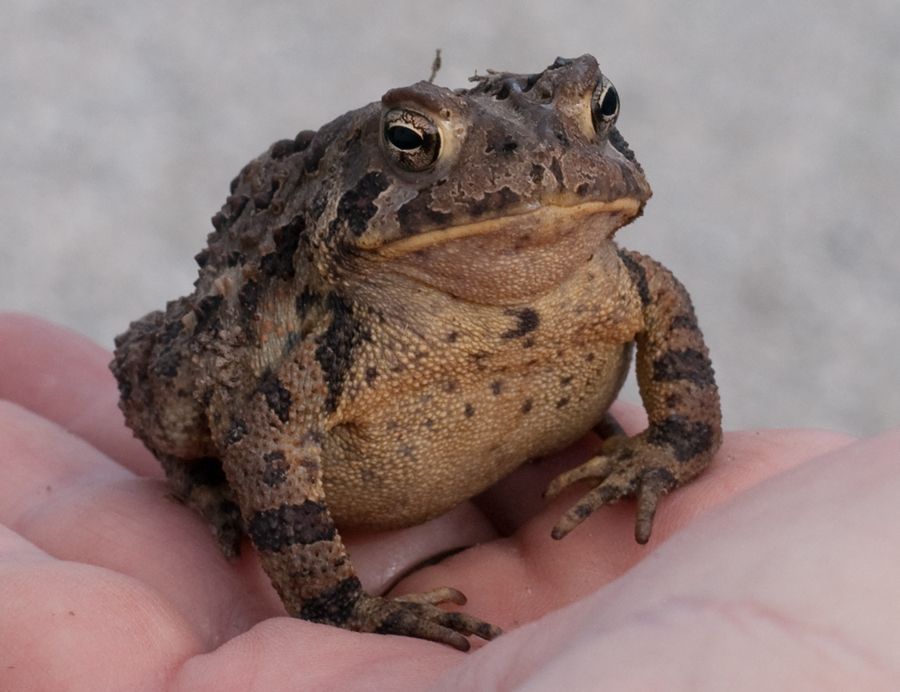 Some ideas are the Exo terra rock hides or skulls.
Some ideas are the Exo terra rock hides or skulls.
LIGHTING & TEMPERATURES
Horny toad lizards like it hot during the day. A 100-105 degree basking spot is good. However, like all reptiles they are dependent on thermoregulation to control their body temperature. So you still want to provide a hot and cool side to your enclosure. All the heat elements should be on one side and the other will be the cool side. The easiest way to increase the heat in your enclosure is with a reptile heat light and an Exo terra or Zoo Med heat pad placed on the outside underneath the enclosure. Turn the light off at night and leave the heat pad on 24/7. The rest of the enclosure can be in the 72-75 degree range. At night, temps can drop to as low as 70 degrees. Use a good quality temperature gauge, like Zoo Meds digital temp gauge or Exo Terras Thermometer.
Horny Toad lizards need UVB lighting to help them absorb calcium and to synthesize vitamin D3. Since they are not out in natural sunlight in our homes, we must provide UVB light in the form of a special fluorescent bulb designed to produce UVB rays.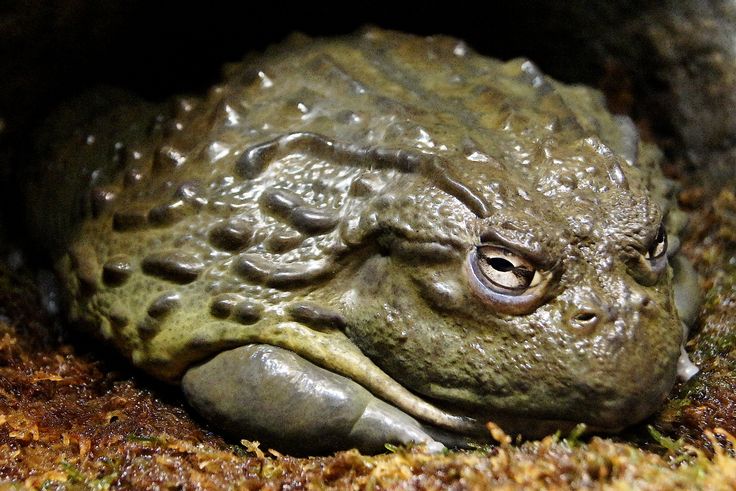
The best bulbs are the mercury vapors such as Exo Terra's Solar Glo bulbs, ZooMed's Powersun, or Solar bright bulbs. These provide heat and UVB all in one bulb. You can also use separate basking (heat) bulb and UVB bulbs. If you use these you will want the Zoo Med 10.0 or Exo Terra 150 desert variety.
In colder climate areas, your lizard may need extra heat in the winter to keep them from brumating. You can achieve more warmth by adding an extra heat lamp, or depending on the temperature in your home, you may be able to get away with something as simple as putting a folded towel over half of the enclosure (away from your heat fixtures).
HUMIDITY
Keep a non porous water bowl in with your horny toad lizard and make sure it always has clean water. Exo Terras water bowls or Flukers water bowls are good choices. You might have to change the water out everyday if your lizard likes to defecate in it. Scrub the bowl at least once a week to keep bacteria slime from building up.
FEEDING
Horny toad lizards are mostly harvester ant eaters. In the wild, they will eat up to 100 ants a day. They will accept small crickets in place of the ants. However, we recommend giving them a formic acid supplement a couple times a week, like Repashy formic cal plus supplement if you are not going to feed them ants. These lizards do not like to chase down their food and will hang out at anthills ready to pick off the ants that come out. This means it is helpful if you drop the bugs in the same spot of the enclosure every time. They will get to know where the food comes from and hang out there. You also want to supplement the bug diet at least every other feeding with calcium such as Zoo Med calcium with D3.
TEMPERAMENT
A Horny toads defense is to squirt blood out their eyes. However, they have to be really scared to actually do this in captivity. They'e not big on being handled; when they are, the lizard will usually remain stiff and quiet in your hand. This means they're not very happy and are just waiting for a chance to bolt back to safety.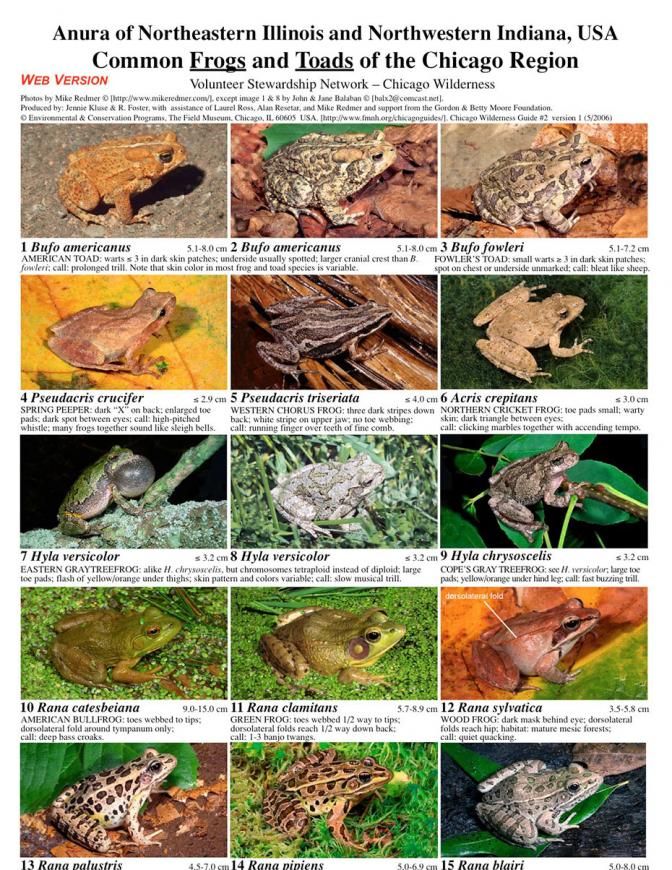 You can hold them some, but frequent handling is not recommended. If you provide the correct environment, they can be quite an entertaining pet.
You can hold them some, but frequent handling is not recommended. If you provide the correct environment, they can be quite an entertaining pet.
What and how to feed amphibians?
A varied diet is the key to good health for your amphibian. In their natural environment, many amphibians are formidable hunters. For example, the American bullfrog usually feeds on bats and turtles. Chinese giant salamanders have been known to eat duck, and an African bullfrog was once seen eating 17 newly hatched spitting cobra babies.
Most amphibians prefer to get their food live. Many living organisms can become their victims, ranging from crickets and earthworms to roach and crayfish.
Red-eyed tree frog (Agalychnis callidryas)
The easiest and most affordable way to feed your pets is insects. Crickets, for example, are sold in many pet stores. But this diet definitely needs vitamin supplements.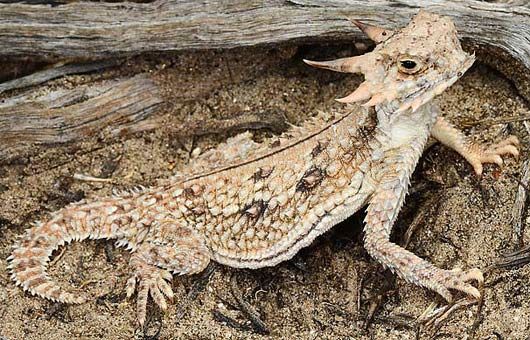
First, make sure your amphibian food is the right size for them. Then, before feeding, sprinkle it with a supplement containing calcium and vitamin D3. Supplementation with calcium is essential to prevent the development of MBD (Metabolic Bone Disease). This serious disease occurs when there are not enough minerals in the amphibian diet. Plant insects intended for feeding in a jar, add 1-2 pinches of mineral supplement there, close the lid and shake so that the insects are covered with this powder.
Use a feeding bowl or tweezers to keep the powder from falling off insects. Feed nocturnal amphibians such as the fire salamander at night. In the care of nocturnal animals, you will be helped by a lamp that emits waves invisible to amphibians.
Insect larvae such as maggots or mealworms are also very nutritious. These worm-like creatures are an early stage in the development of beetles. Use them before they have scary jaws.
Earthworms and coretra do not need additional additives.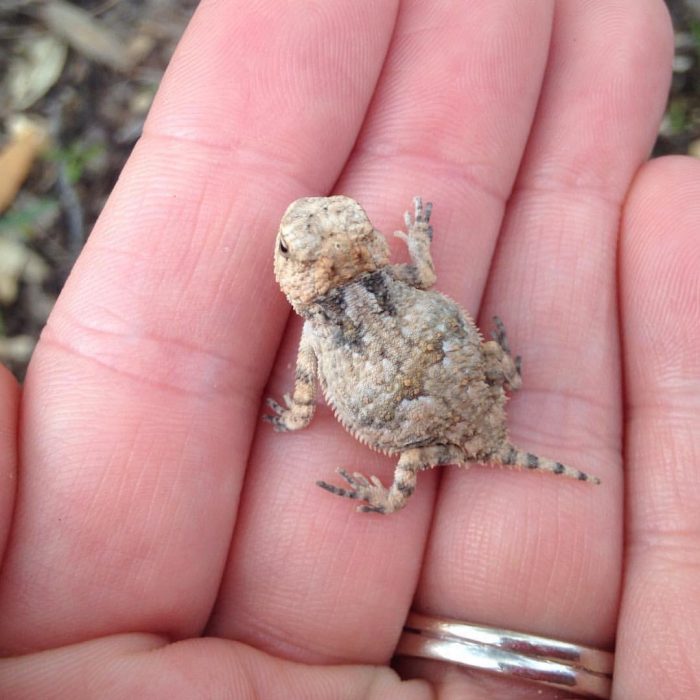 Dig up earthworms only where there are no pesticides. Place them in a cup while feeding to prevent them from running away and burrowing into the substrate.
Dig up earthworms only where there are no pesticides. Place them in a cup while feeding to prevent them from running away and burrowing into the substrate.
Pseudophryne australis (Pseudophryne australis)
The smaller the size of the food, the better because smaller prey is better digested and, when the food consists of immature forms of insects, it contains less difficult to digest parts. While in many amphibians pieces of the substrate swallowed with food can be harmlessly removed from the body, in some they clog the stomach. Remove uneaten food before it pollutes your terrarium.
Try to meet the individual requirements of your pets. Some of them require a very specific approach. Tree frogs, for example, feed only on crawling and flying insects, while the red-eyed tree frog hunts only at night.
Whenever possible, offer your pets the insects you have caught. You can buy special traps, or you can catch them by dragging the net through the tall grass. This will be a good addition to your amphibian table. You can sort the caught insects by size using the appropriate holes in the container where you keep them.
This will be a good addition to your amphibian table. You can sort the caught insects by size using the appropriate holes in the container where you keep them.
Related article Worms are the ideal food for tailed amphibians
If you have insects, feed them food with vitamin supplements that your pets need. You can also give insects vegetables and fruits such as sweet potatoes or oranges. The amphibian that eats them will also get all these vitamins.
How to diversify the diet? Vary the types of food you offer your pets. In the pet store you can buy various insects, worms, beetle larvae, such as mealworm larvae or wax moths. You can buy earthworms and maggots in fishermen's stores. To diversify the diet of your wards, collect insects.
Paddlefoot
Strict feeding schedule . Try to feed your amphibians an average of 3 times a week. After eating, many animals stop eating, and you can remove the uneaten insects. Satisfy all the specific requirements of your pets. Small, active frogs, such as mantellas, need to be fed daily and given frequent vitamin supplements. And salamanders that feed on fish and earthworms, such as sirens, can be fed once every two weeks and not given any supplements.
Satisfy all the specific requirements of your pets. Small, active frogs, such as mantellas, need to be fed daily and given frequent vitamin supplements. And salamanders that feed on fish and earthworms, such as sirens, can be fed once every two weeks and not given any supplements.
Temperature . Metabolism in cold-blooded animals such as reptiles and salamanders depends on the temperature of their environment. This means that the higher the ambient temperature, the faster the metabolism and the more often you need to feed your animal. However, if the temperature is too high, they may stop eating or be unable to digest food. In many amphibians, the digestion process takes place at a temperature of +12 to +22°C, but some amphibians, such as hymenochiruses, require temperatures above +26°C.
Meat-eating amphibians. Some amphibian species are carnivorous. A toad-aga and a horned frog can eat a mouse or a whole fish - both are very nutritious. In the wild, tiger salamanders also feed on mice. But if you feed them rodents in captivity, then they may develop an eye disease - clouding of the cornea.
In the wild, tiger salamanders also feed on mice. But if you feed them rodents in captivity, then they may develop an eye disease - clouding of the cornea.
Copyright holder © Zooclub portal (www.zooclub.ru)
Tags: amphibians, amphibian keeping, amphibian feeding
Set up a terrarium for ground frogs
What type of terrarium is suitable for frogs and toads living in drier climates? It is a large tank with a substrate and a small pond, usually in the form of a cup of water or a small pond. It is important that you do not depend on the type of terrarium you see in the pet store when you design your own at home. It is best to study your animal and determine what its natural habitat is like.
The size of the frog terrarium
The size directly depends on the species of its inhabitants. Small terrariums are suitable for small frogs and toads, but if there are a lot of them, then the size should increase accordingly.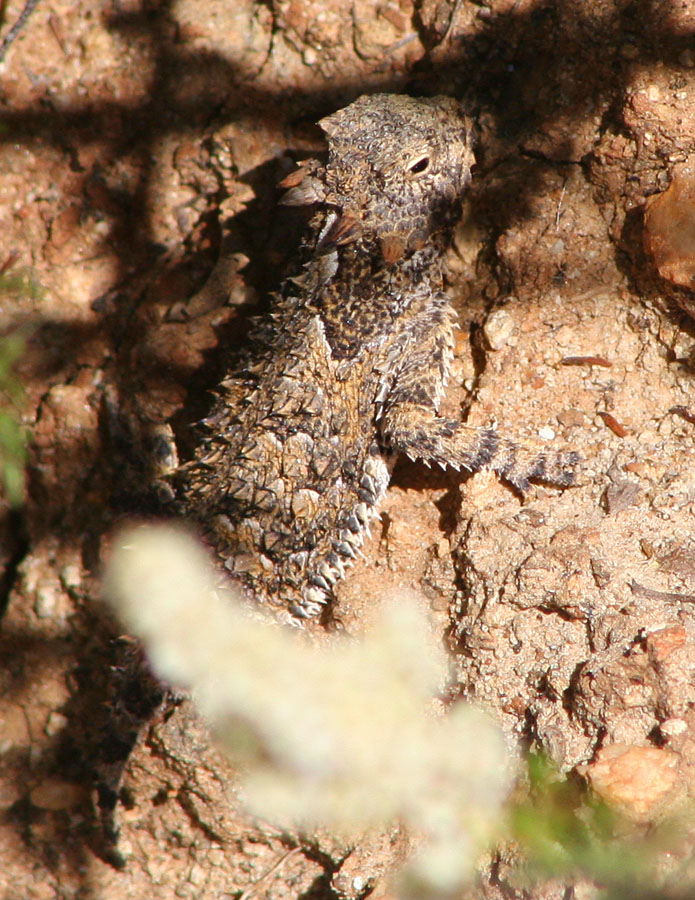
Slingshot, horned toad (Ceratophrys)
Humidity for ground frogs
Many people mistakenly believe that if a frog feels dry, it will dive into its pond. Some species are very dependent on the humidity of the environment. It can be supported in several ways. First, get a sprayer and regularly spray the terrarium with settled water. Spray everything. Live plants are especially good at retaining moisture, but if you have artificial plants, then moisture will not harm them either.
Note . It is not always necessary to spray a terrarium in which toads live, which prefer a dry climate.
You can also put moss in the terrarium and keep it moist; keep the soil moist, and if you don't have soil, you can use vermiculite (available at gardening stores).
A terrarium cover that keeps it dry and keeps it ventilated is a very good idea. Some terrariums have something like a greenhouse, which is ideal for some types of frogs.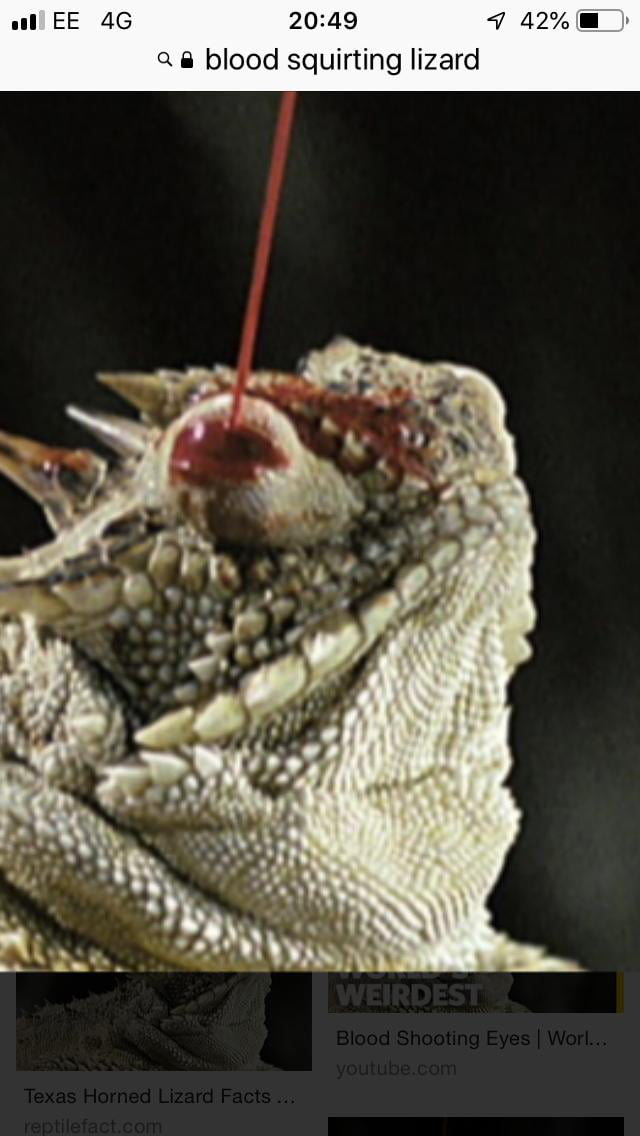
Related article Equipping a terrarium for tree frogs (tree frogs)
If you have a pond with running water in your terrarium, then spraying is not necessary, since water splashes have the same effect. Again, it all depends on the species you have.
If your frogs require very high humidity, you can lower the compressor into the pond. Floating air bubbles very well increase the level of humidity. For more information on this subject, contact the place where you purchased your pets.
Horizontal Paludarium for Terrestrial Amphibians
Lid for Frog Terrarium
The lid for a terrarium containing frogs must fulfill two conditions - to prevent your pets from escaping and to provide them with good ventilation. It would be nice if it was made of some kind of non-rigid material. There are two reasons for this. Firstly, especially active frogs will not get hurt by hitting the ceiling while jumping. Secondly, such a coating provides better ventilation. There are many varieties of terrarium lids available in pet stores that are ideal for frogs.
There are many varieties of terrarium lids available in pet stores that are ideal for frogs.
Terrarium lighting
Lighting for frog terrariums is still a controversial issue . Many hobbyists claim that frogs, unlike lizards, snakes, turtles, and other reptiles, do not need full spectrum lighting to stay healthy. This kind of lighting helps some animals to produce vitamin D3, and frogs get it from their food, so normal light is enough for them. Of course, special lighting sources that can be bought at pet stores will not cause harm if turned on for a maximum of 4-5 hours a day.
It is best to adhere to the following rules
Do not use too bright light . It can damage the eyesight of frogs. Even if it does not harm the eyesight of your wards, it can simply cause them discomfort, and the frogs will constantly hide in shelters, which is very uninteresting for their owner.
The best artificial lighting for frogs is the fluorescent lamp. On the one hand, it does not get very hot. Many frogs ended their days by burning themselves on a hot light bulb. If you are using a light source that gets very hot, make sure the frog cannot jump on it.
On the one hand, it does not get very hot. Many frogs ended their days by burning themselves on a hot light bulb. If you are using a light source that gets very hot, make sure the frog cannot jump on it.
Many frogs need daylight to tell what time of year it is, as they do in their natural environment. The daylight period should be approximately 12 hours.
It's best to keep the terrarium out of direct sunlight, as this will cause rapid algae growth on the walls of your pond and make it a nightmare to clean.
Terrarium Heater for Terrestrial Frogs
If your frogs require a different temperature than you live in, the terrarium will need additional heating. If the terrarium has a large body of water, then it will also need to be heated.
Related article Aquarium filters for tailed amphibians
Air heating
The easiest way is to heat the air of the entire room to the desired temperature.